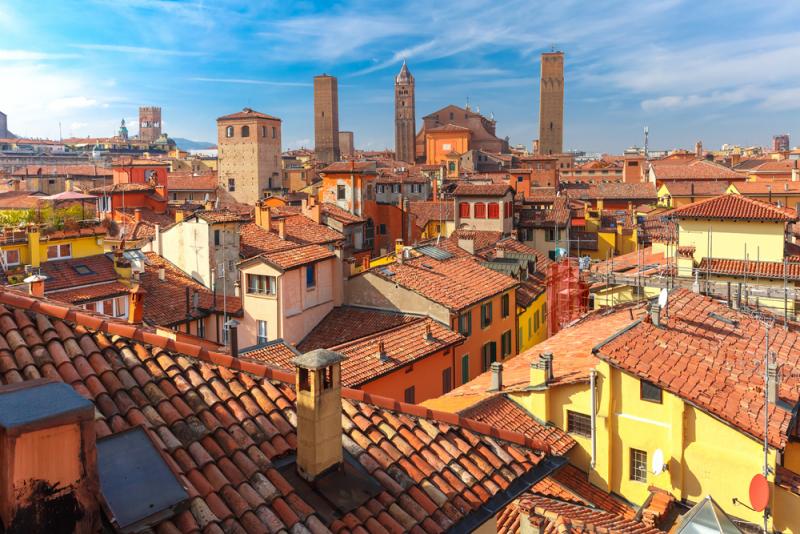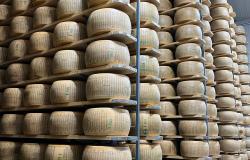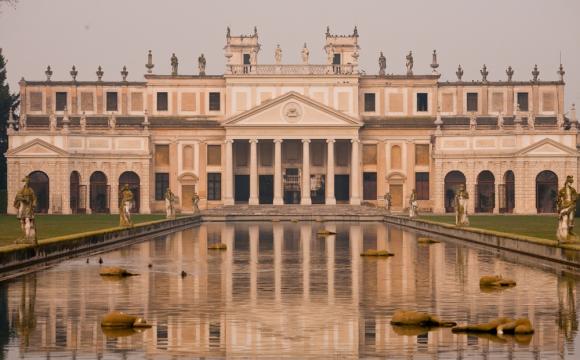For our series on ten things you can do for free in Italy's most popular cities, we head to Bologna, Emilia-Romagna food-loving capital, which is attracting more and more fans every year. If you're on a budget, there's plenty you can do in Bologna, here are the top ten picks from our contributing editor Silvia Donati, who is a Bologna native.
1. Basilica of San Petronio
One of Bologna’s most important monuments, the Basilica of San Petronio is free to enter. While not the city’s cathedral, San Petronio, as we simply call it, is the Bolognesi’s favorite church – although it was not consecrated as a church until the mid-1950s. The basilica was built as a public space for the people of Bologna, dedicated to the city’s patron saint, Petronius. It is one of the world’s largest churches. Please note there’s a fee of €2 if you wish to take photos, and a €3 fee to see Cappella Bolognini, with a striking depiction of Heaven and Hell.

2. Palazzo D’Accursio
Most visitors skip this palace that sits right on Piazza Maggiore, Bologna’s main square, and so miss an important piece of the history of Bologna as this building has been the seat of the city’s political power since the Middle Ages. Walk through the courtyard, climb the staircase designed by Bramante and reach the first floor, which has some finely decorated rooms, such as the Baroque Sala del Consiglio Comunale, still used for town hall meetings. On the second floor, there are more frescoed rooms to visit and a great view over Piazza Maggiore.

3. Roman Bononia in Sala Borsa
The Romans established the colony of Bononia in 189 BC, and the only archeological remains of the Roman history of Bologna permanently visible are to be found in the city’s main public library, Sala Borsa, which stands next to Palazzo d’Accursio. In the main hall, accessible to all, a crystal floor allows people to peek through – and walk right above – the remains of ancient Roman streets and buildings, which came to light only in recent years during renovation works.

4. Oratorio di Santa Cecilia
To the back of the Basilica of San Giacomo Maggiore on via Zamboni, the street that cuts through the heart of the university district, is a little gem few know about: the Chapel of Santa Cecilia, containing a rare cycle of frescoes by major local painters of the Bolognese Renaissance, including Amico Aspertini, Francesco Francia and Lorenzo Costa. On both sides of the walls of the oratory, frescoes, divided in ten squares, tell the story of Saint Cecilia and her husband Valeriano, who became martyrs for not having denied the Christian faith.

5. Finestrella di via Piella – the window onto the canal
Another little-known aspect of the history of Bologna is that, since Roman times, Bologna had a network of navigable canals, which in the Middle Ages further expanded to power the increasing number of water wheels, spinning plants and saw mills, which turned Bologna into one of the main textile production centers in Italy. Not much remains of the city’s canals as most were buried underground in the 20th century. But you can get an idea of what Bologna looked like in the past by looking out the small window on Via Piella, right in the city center.

6. Basilica di Santo Stefano
Another major monument of Bologna is also free to enter: it is the complex of Santo Stefano, also known as Sette Chiese, or Seven Churches; within the complex are four churches, a courtyard and a chapel, and the construction is meant to recall the Church of the Holy Sepulchre in Jerusalem, following a wish by Saint Petronius, a bishop of the city during the 5th century.

7. Piazzale di San Michele in Bosco for one of the best views of Bologna
Just outside the city center, reachable by bus n. 30, is the square in front of the architectural complex of San Michele in Bosco, which affords a great view over Bologna. You’ll be able to make out the Two Towers, the Basilica of San Petronio, several medieval towers, the red roofs which give the city the nickname of ‘la rossa’ (the red one), and even the modern Fiera district, home to a major trade exhibition center. While there, step inside the church to admire the 16th-century frescoes.

[Photo by Silvia Donati]
8. Walk up the Portico di San Luca
If you don’t mind a bit of an uphill walk, make sure you climb the Portico of San Luca, at 3,8 km the longest portico in world, with 666 arcades. As you keep walking up, you’ll get beautiful views of the city, until you reach the Basilica of San Luca, another landmark Bolognese monument, the one that signals Bolognesi they’ve arrived home – because it stands on top of a hill, it is visible from the autostrada (highway) as you get into the city. For the walk up to San Luca, you should start from the Arco del Meloncello, which you can reach by taking bus n. 20 from the city center (this also cuts the walk to about 2,4 km).

9. Parco Villa Ghigi
Bologna offers several pleasant green spaces, and one of the city’s best parks, with good views of the city, is the Parco di Villa Ghigi, a 28-hectare park you can reach on foot from Porta San Mamolo, one of the ancient access gates to the city. It is a peaceful area for walks and perfect for picnics with a view.

[Photo by Silvia Donati]
10. Open-air cinema in Piazza Maggiore
This is a seasonal event, which has grown to become one of the Bolognesi’s favorite summer events: free movies in the open-air cinema set up in Piazza Maggiore, Bologna’s main square. Usually running from mid-June to mid-August, it features original-language films, with different retrospectives every year to enjoy within a truly spectacular backdrop, that of Piazza Maggiore at night.

Love free things to do in Italy? Check out our series for more ideas.







